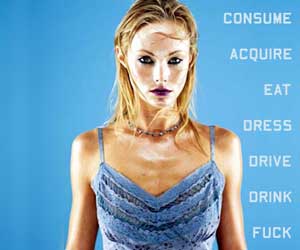other publications
Image + Text
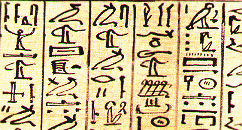
Computer-mediated communication, especially as it applies to the WWW, encourages writers to become more visually literate, and visual artists to consider the expressive power of text.
The frequent juxtaposition of text and image on web pages place their respective "rhetorics" side-by-side, and demonstrate how text and image compete for our attention, or work in harmony to create an expressive message.
Text is fast, highly-compressed, iconic, robust, stable, and familiar. The alphabet has a long and interesting history which demonstrates the evolution of writing from its origins as pictures of sounds and meanings--hieroglyphs in Epypt and ideograms in China, for example--to the more abstract and flexible phonetic alphabet in use by many contemporary cultures. The following example, and its translation, illustrate the powerful compression of meaning capable of both ideogram and phonetic alphabet:

"Tigers do not breed dogs"________"Calamities do not occur singly"
When such compressed expression is used in the service of a proverb, we can see just how portable text can be. (The nearest equivalent to this first proverb in English is perhaps 'Like father, like son.' Mao Zedong was particularly adept at incorporating classical features af this kind into his political speeches. The equivalent phrase for the second phrase would be 'It never rains but it pours'. " http://acc6.its.brooklyn.cuny.edu/~phalsall/texts/chinlng2.html)
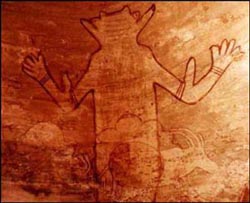 Images on the web are slower, less easily compressed, less robust and stable--that is, they are dependent on monitor quality and resolution--but they are often more iconic than text descriptions. Since the earliest pictographs and petroglyhs, rock art has expressed what could not be expressed in language, and often had aspirations to the magical and spiritual. It is the ancient sense that images have power and an ability to etch themselves immediately on consciousness that give them their iconic weight.
Images on the web are slower, less easily compressed, less robust and stable--that is, they are dependent on monitor quality and resolution--but they are often more iconic than text descriptions. Since the earliest pictographs and petroglyhs, rock art has expressed what could not be expressed in language, and often had aspirations to the magical and spiritual. It is the ancient sense that images have power and an ability to etch themselves immediately on consciousness that give them their iconic weight.
 It might be argued that there is nothing new about the juxtaposition of text and image: from Medieval illuminated manuscripts to propaganda posters and glossy magazine ads, our culture has developed the combination of text and image to a high art.
It might be argued that there is nothing new about the juxtaposition of text and image: from Medieval illuminated manuscripts to propaganda posters and glossy magazine ads, our culture has developed the combination of text and image to a high art.
In many ways, the juxtaposition of text and image signifies a persuasive visual argument: we expect to be prompted towards a belief, a fear, or a desire satisfied. However, the new medium of the World Wide Web encourages us to re-evaluate what we know about both text and image, because they are changed in this dynamic medium where the resolution, size and composition--thus the loading speed--of the image are factors of importance .
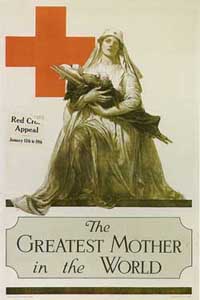 Just as viewers of early television had to adjust to the "degradation" of image quality compared to film, so are viewers of the web expected to accept images of lower resolution and smaller size when compared to glossy magazine ads. Designers of webpages must now consider how a video monitor affects the readability of text, how coloured backgrounds affect readability or images placed "on top" of them. How do different monitors and screen resolutions affect colour, sharpness, and font size?
Just as viewers of early television had to adjust to the "degradation" of image quality compared to film, so are viewers of the web expected to accept images of lower resolution and smaller size when compared to glossy magazine ads. Designers of webpages must now consider how a video monitor affects the readability of text, how coloured backgrounds affect readability or images placed "on top" of them. How do different monitors and screen resolutions affect colour, sharpness, and font size?
Are navigation icons "iconic" enough? Why use an image when a word would do just as well? (Those who have studied web design claim that people are more likely to click on an icon, even though they may not be entirely sure where it will lead them.)
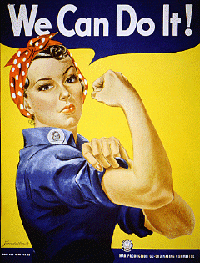 The addition of animation, movement, and sound to the repertoire of image devices positions the web somewhere other than the billboard, television, newspaper, book, and magazine or journal. However, the rhetorics of these media will not be ignored by skilled designers. The WWW is a dynamic delivery medium. Web pages display at different rates depending on the bandwidth of the connection. Page elements can display at different times. Viewers can choose to eliminate your images, or change your colours. Older browsers are often unable to display all the recently-specified HTML features such as frames, java, or style sheets. Plug-ins may be a necessary addition to the performance of your page. Unlike a print ad, a viewer may cycle through a page before it has finished loading.
The addition of animation, movement, and sound to the repertoire of image devices positions the web somewhere other than the billboard, television, newspaper, book, and magazine or journal. However, the rhetorics of these media will not be ignored by skilled designers. The WWW is a dynamic delivery medium. Web pages display at different rates depending on the bandwidth of the connection. Page elements can display at different times. Viewers can choose to eliminate your images, or change your colours. Older browsers are often unable to display all the recently-specified HTML features such as frames, java, or style sheets. Plug-ins may be a necessary addition to the performance of your page. Unlike a print ad, a viewer may cycle through a page before it has finished loading.
As students of computer-mediated communication, we are in the exciting and challenging positon of rediscovering the rhetorics of image and text. In the developing medium of the WWW, these rhetorics have become hypertextual, dynamic, and multi-dimensional. Designers in the new medium will need to re-consider what makes an image iconic--how it presents itself to memory, how consciousness reads the sign of the image over time--and what makes writing both expressive and impressive. Underlying this state of affairs are three central questions:
- How does an image communicate?
- How does text communicate?
- How do they communicate together?
While the questions seem simple enough on the surface of things, a study of the history of communications reveals the complexity of these ancient sign systems. The art of juxtaposition, explored by artists working in all styles and the stock-in-trade of all newspaper and magazine editors, becomes one of our most significant rhetorical abilities.

References
- Regional and Global Characteristics of Illuminated Manuscripts
- Illuminated Manuscripts, The Catholic Encyclopaedia
- Veneration of Images, The Catholic Encyclopaedia
- Greek Gospel Illumination
- Ad Litteram Medieval Pages
- Aberdeen Bestiary
- The Diamond Sutra, The World's Earliest Dated Printed Book
- Lindisfarne Gospels
- Breviary
- Powers of Persuasion: Poster Art from World War II
- The Poster War: Allied Propaganda War , The Provincial Museum of Alberta
- Adbusters: Manufacturing Desire
Transparent GIFs
The encoding scheme GIF89a allows you to specify one colour of a GIF image to be transparent. You can thus create transparent backgrounds which allow images on your webpages to "float" on the page because the backgound colour of the page will show through the image. You can also use this technique to create titles or to import special fonts onto your webpage. The example below is a sample of Charles Manson's handwriting displayed as a transparent gif.[Quotation from Killer Fonts]

To create a transparent GIF, you'll need an imaging program like Photoshop, which allows you to select a single background colour and make it transparent. Alternately, you can start with a transparent background layer, add your gif image or text, and export as GIF89a.

